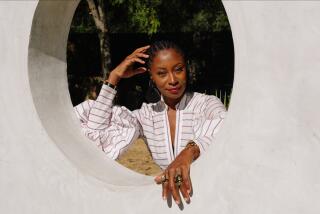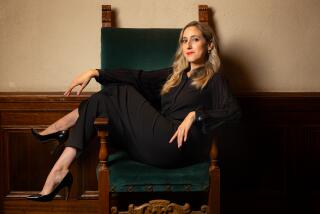Lucinda Childs’ ‘Dance’ heads to UCLA Live
When Lucinda Childs premiered “Dance” in 1979, audience members would walk out shocked and even offended by the choreographer’s minimalist, repetitive approach to movement. “It wasn’t dance to them, that was the comment I’d get,” she recalls. “They felt they hadn’t seen anything like it before.”
More than 30 years later, the 70-year-old choreographer who got her start as a member of the revolutionary Judson Dance Theater in the 1960s has the right to feel thoroughly vindicated. Her seminal work, revived in 2009 for a festival at Bard College, has been touring the United States and Europe and will be presented at UCLA Live at Royce Hall on May 6 and 7. Pioneering in its day for exploring the interplay between live and filmed performance, “Dance” features a score by composer Philip Glass, a black-and-white film by conceptual artist Sol LeWitt and Childs’ choreography of repetitive movement sequences that create complex patterns and rhythms through the process of accumulation and variation.
But now, a whole new cast of 10 dancers dressed all in white performs Childs’ choreography behind a scrim showing a projection of LeWitt’s film of the work’s original dancers in performance. The magnified images of the filmed dancers loom large and ghostly over the live dancers during the hourlong work and their haunting presence largely contributes to its evocative juxtaposition of past and present.
“The steps are exactly the same, though I didn’t expect the new dancers to imitate the eccentricities of the film,” says Childs, who observes that her current dancers have more technical training than her original performers. “In the original production, I chose dancers who could cope with the stamina of the piece and they all came from different backgrounds. This group now is more uniform, with more informed backgrounds in terms of training.”
Childs also welcomed the opportunity to update the technology of “Dance” and ensure the work’s future preservation. LeWitt’s 35-mm film, for example, has been converted to digital format. “This is very exciting to me,” she says. “And I am thrilled that there’s still interest in this work.”
More to Read
The biggest entertainment stories
Get our big stories about Hollywood, film, television, music, arts, culture and more right in your inbox as soon as they publish.
You may occasionally receive promotional content from the Los Angeles Times.





